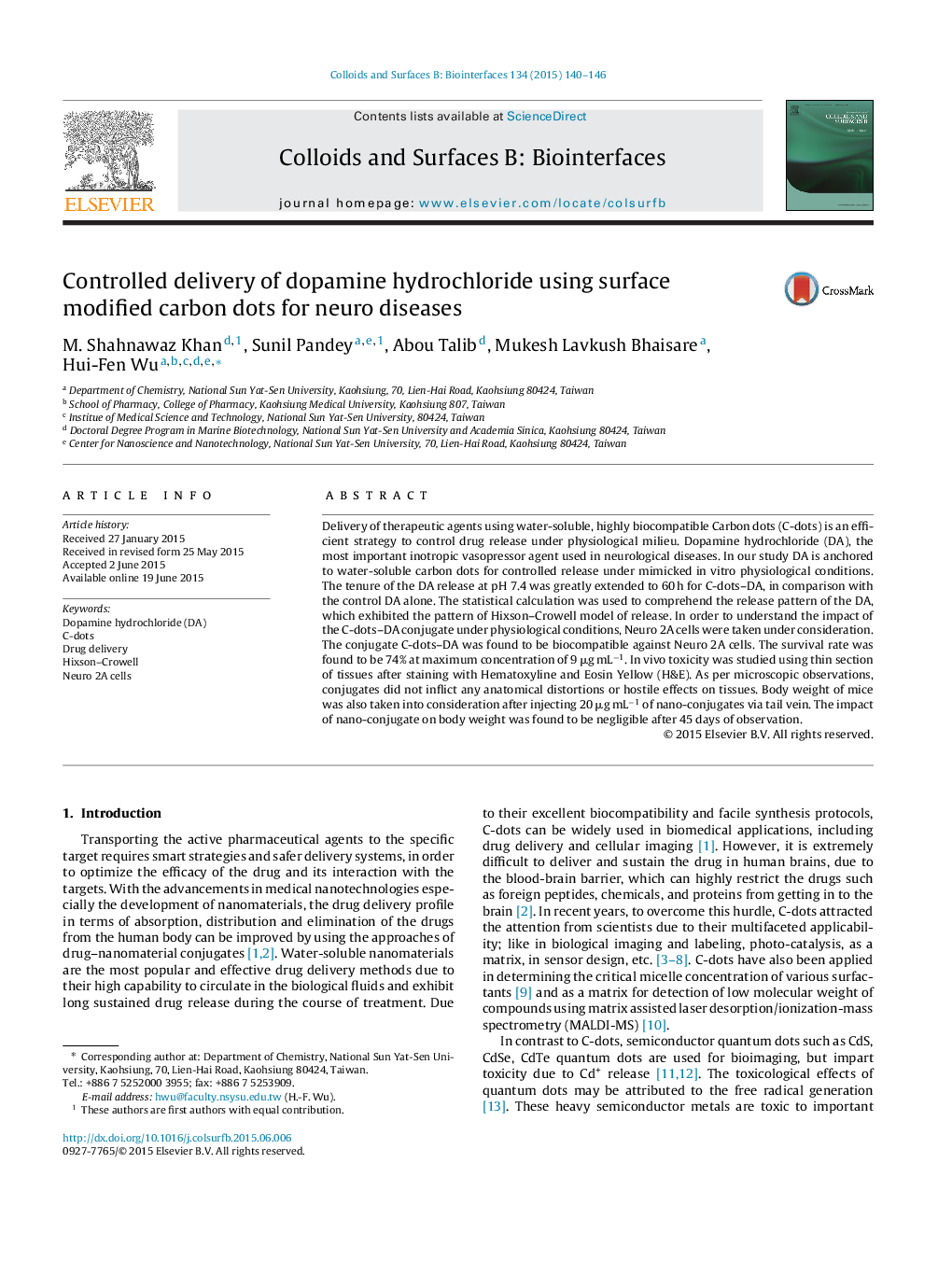| Article ID | Journal | Published Year | Pages | File Type |
|---|---|---|---|---|
| 599370 | Colloids and Surfaces B: Biointerfaces | 2015 | 7 Pages |
•Controlled release of dopamine hydrochloride up to 60 h.•Study of C-dots–DA on vital organs of mice.•Effect on mice weight after taking neuro drug.
Delivery of therapeutic agents using water-soluble, highly biocompatible Carbon dots (C-dots) is an efficient strategy to control drug release under physiological milieu. Dopamine hydrochloride (DA), the most important inotropic vasopressor agent used in neurological diseases. In our study DA is anchored to water-soluble carbon dots for controlled release under mimicked in vitro physiological conditions. The tenure of the DA release at pH 7.4 was greatly extended to 60 h for C-dots–DA, in comparison with the control DA alone. The statistical calculation was used to comprehend the release pattern of the DA, which exhibited the pattern of Hixson–Crowell model of release. In order to understand the impact of the C-dots–DA conjugate under physiological conditions, Neuro 2A cells were taken under consideration. The conjugate C-dots–DA was found to be biocompatible against Neuro 2A cells. The survival rate was found to be 74% at maximum concentration of 9 μg mL−1. In vivo toxicity was studied using thin section of tissues after staining with Hematoxyline and Eosin Yellow (H&E). As per microscopic observations, conjugates did not inflict any anatomical distortions or hostile effects on tissues. Body weight of mice was also taken into consideration after injecting 20 μg mL−1 of nano-conjugates via tail vein. The impact of nano-conjugate on body weight was found to be negligible after 45 days of observation.
Graphical abstractFigure optionsDownload full-size imageDownload as PowerPoint slide
